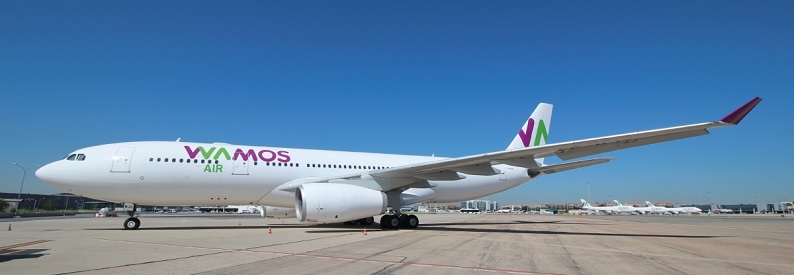The Philippine Stock Exchange suspended trading in Philippine Airlines (PR, Manila Ninoy Aquino International) parent PAL Holdings on Friday, June 18, in the wake of the publication of its 2020 annual report exposing a record loss amid “the extraordinary impact of the Covid-19 pandemic on operations.”
The report, which was issued in a stock exchange filing on June 17, as was its first-quarter report for 2021, does not comply with the Securities Regulation Code of the Philippines, the bourse said. This was because the Manila-based accounting firm SyCip Gorres Velayo & Co. had affixed a disclaimer to the accounts saying it had “not been able to obtain sufficient appropriate audit evidence” for an opinion on PAL’s finances.
PAL Holdings posted a record PHP73 billion peso (USD1.5 billion) net loss for the year, down from PHP10.3 billion (USD211 million) the previous year. Its 2021 first-quarter loss narrowed slightly to PHP8.6 billion (USD177 million) from PHP9.4 billion (USD193 million) year-on-year.
The accounting firm pointed out that the group’s liabilities exceeded assets by PHP164.02 billion (USD3.37 billion) as of December 31, 2020, and PAL also had long-term obligations comprising mainly of secured loans and lease liabilities amounting to PHP32.57 billion (USD669 million) and PHP152.03 billion (USD3.12 billion), respectively.
“The group’s liquidity situation became more critical in 2020 and 2021 due to severely weak passenger sales and revenue as an adverse effect of the Covid-19 pandemic. [...] Consequently, the decline in revenue and cash inflows has put significant strain on the group’s liquidity position and on its compliance with certain loan covenants,” SyCip Gorres Velayo said, adding that PAL had met neither principal nor interest payments for its long-term obligations since April 2020.
Management and stakeholders are working on the final stages of a restructuring plan “to ensure PAL’s business continuity,” it said, elaborating that - as previously reported - the airline is considering filing a pre-negotiated court-rehabilitation in an overseas jurisdiction, though as of May 26, 2021, it had not yet done so.
“The above events and conditions give rise to material uncertainties that may cast significant doubt on the group’s ability to continue as going concern,” the accountants concluded.
On aircraft delivery commitments, the report recounted that the only aircraft due in the future include thirteen A321-200Ns, with one scheduled for delivery in December 2021. The remaining twelve - as it announced in August 2020 - have been postponed and rescheduled for 2022-2025.
However, it added without elaborating: “Due to the contagion which has had a catastrophic impact on the world economy, most especially in the airline industry, PAL and Airbus are currently in discussion for further deferral of the deliveries.”
The ch-aviation fleets ownership module shows that Philippine Airlines’ fleet of 61 aircraft and its subsidiary PAL Express’ 30 aircraft are made up of a mix of Airbus, Boeing, and De Havilland Aircraft of Canada types. Of these 91, at least 62 are leased from a range of 22 lessors.
The company also said in its annual report that it had cut expenses by 46% in 2020, but this was offset by a 64% revenue drop. It has drawn on bridge funding and support from majority shareholder Trustmark Holdings, deferred payments to lessors, lenders, and suppliers, and carried out a retrenchment programme. It did not disclose details of the bridging loan.
A 30% workforce cut has already been completed, to a total of 6,238 employees as of December 31, and PAL “will further explore business opportunities to improve sales and increase revenues.”
It stressed that “PAL’s flights and operations will not be affected in any restructuring” and “we will increase our international and domestic flights as the market recovers with the easing of travel restrictions.”
“Philippine Airlines will have a long way to go for recovery. The uncertainty of the situation still prevails, but news on the availability of Covid-19 vaccines brings hope that passenger traffic will be better than 2020. The airline has already started fleet restructuring to reduce capacity and match the projected reduced market demand in the short term. PAL will also rationalise its network by discontinuing certain ultra-long-haul routes and adjusting frequencies,” the group said.
Also on June 18, the Philippines’ Finance Secretary Carlos G Dominguez III - a former chief executive of Philippine Airlines - assured that the government would assist the country’s Covid-afflicted carriers, Manila Bulletin reported.
Two state-run lenders, the Land Bank and Development Bank of the Philippines, had already participated in a PHP16 billion (USD328 million) loan facility for Cebu Pacific Air (5J, Manila Ninoy Aquino International) and its regional unit Cebgo, he said, and as for Philippine Airlines the government is waiting for its expected filing for Chapter 11 bankruptcy protection in the US and for its final rehabilitation plan.







